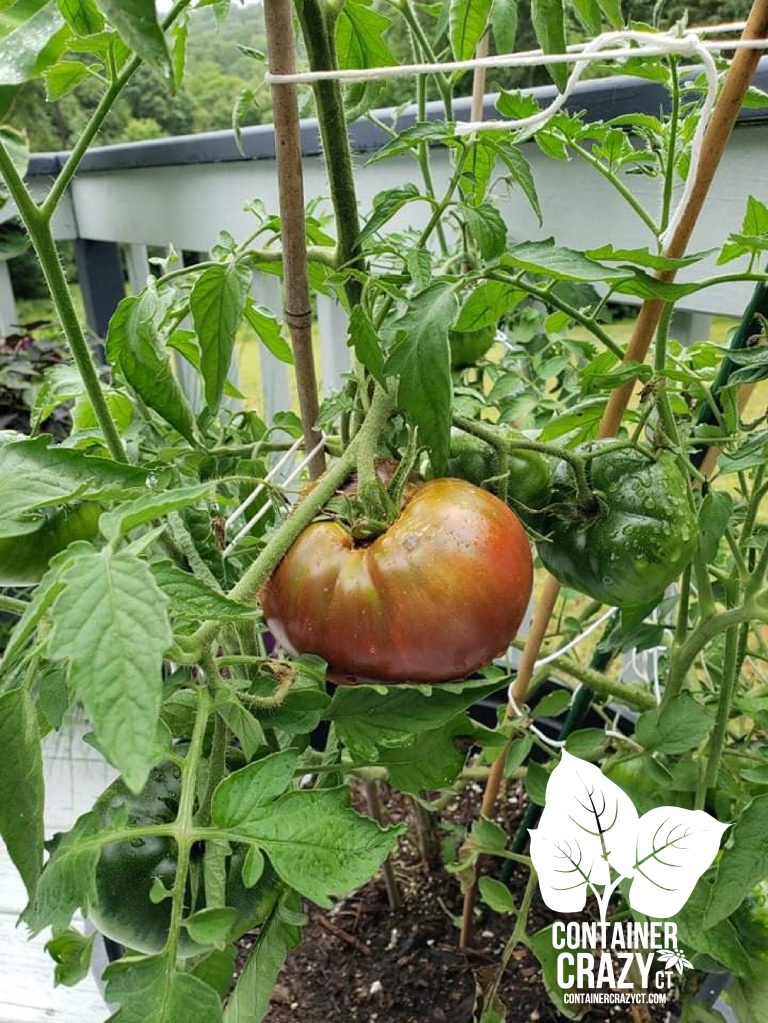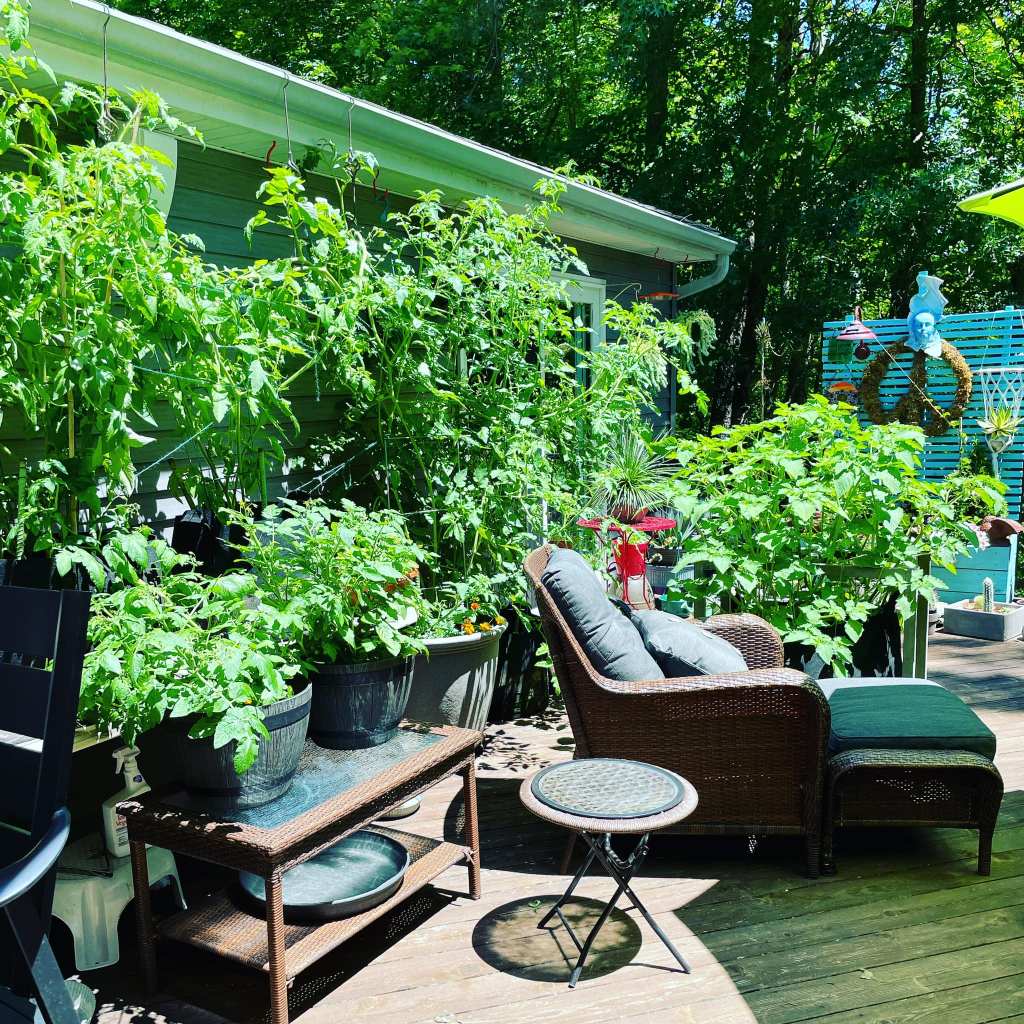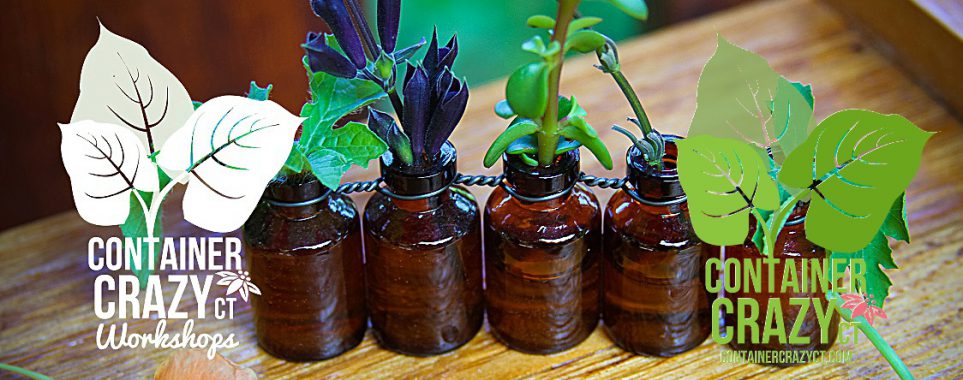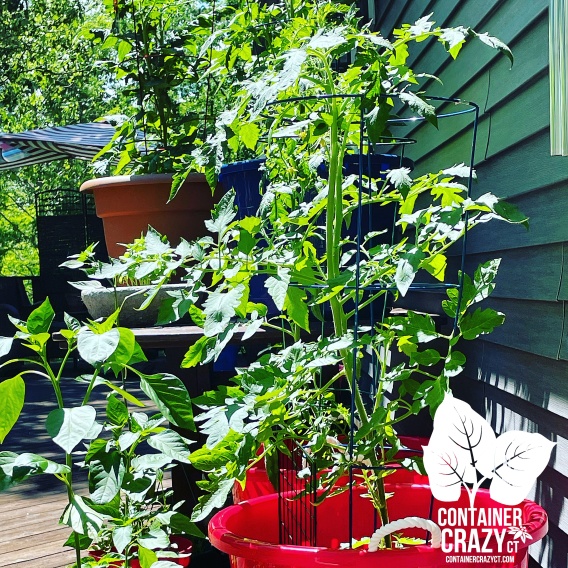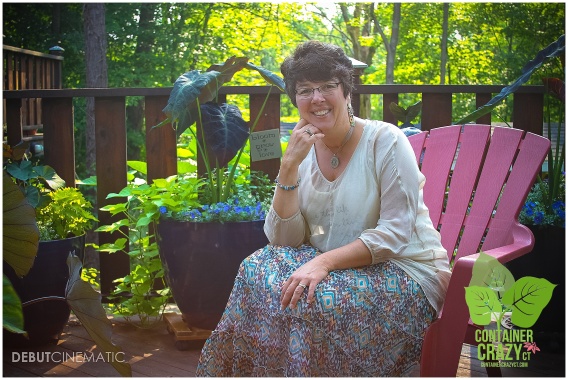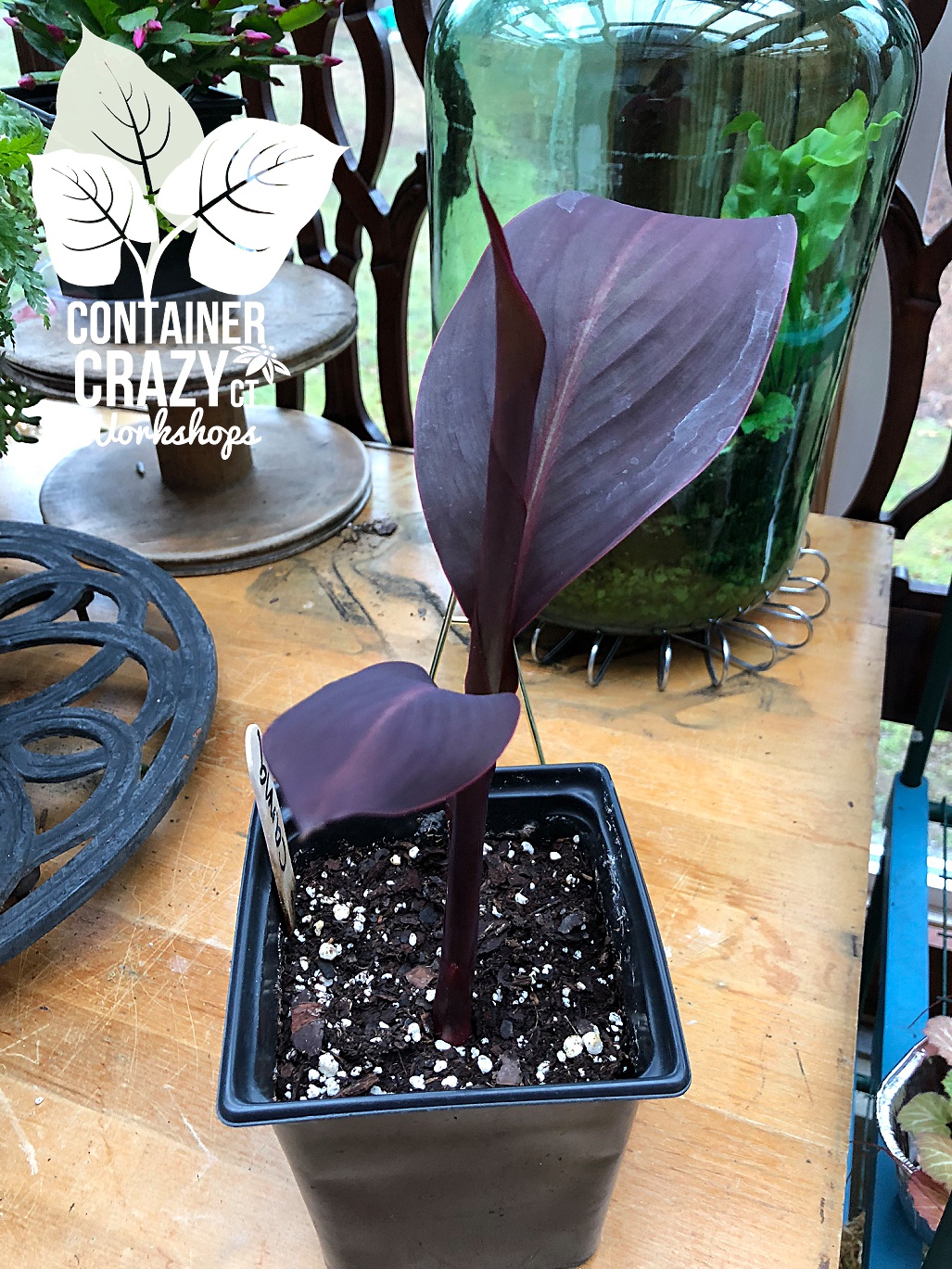I was going to write that my tomato journey started when I fell in love with the colorful art work depicted on seed packets, but that is not true.
It really started as a result of my father. He grew lots of tomato plants. He was known among our relatives of having the best, juiciest tomatoes in town. If you were invited to have some of his extra tomatoes, you were very lucky indeed.
My mother would have to can them into mason jars using her own method of boiling the jars in super-hot water and sealing them after stewing the tomatoes over the stove in a big pot. She didn’t put them through sieves to separate out seeds. She didn’t use a pressure cooker. She would can tomatoes for hours in a hot kitchen. But dang, were those the best darn canned mason jars of goodness ever.
So my tomato journey started with tasting them and witnessing my father growing them at my family home but it was sparked again in my own home when I saw seed packets at a flower show by Hudson Valley Seed Company. I immediately fell in love with how beautiful the seed packets were and are. They are designed by commissioned artists and each packet represents the goodness inside. It is an artistic depiction about the vegetable plant, seed, and variety. The art tells a story and this is what captivated me.

This particular seed company also has cool varieties of tomatoes and other veggie plants, and herbs, etc. Not your typical “big boy” tomatoes as my dad would grow. They have purple tomatoes, tall tomatoes, and gigantic tomatoes, with cool names. It intrigued me. When I saw the Oxheart tomatoes, which grow 3 pound fruit, my eyes bugged out. Or the Mikado heirlooms with broad pink beef-stakes and exceptional flavor, I had to try them. The list goes on. It grew from there.

Mikado heirloom with Thai basil
No one taught me how to ‘sow’ tomato seeds or how to plan them out based on frost dates and timing. Not even my Dad. He was the type of gardening Dad, at least from my perspective of the 6 kids in my family, who did not explain the whole tomato growing thing at all. He just had us tag along or maybe we just visited him to watch while he was gardening. And sometimes he would ask us to do a tiny chore, like carry this basket of tomatoes to the house, etc.
It was all learning by unaware observing back then, when I was a kid at my family home. Unaware because I don’t recall purposely observing, just observing. Just being there, and also of course, remembering the flavors of his amazing tomatoes at my family home when young and until the day I moved out in my 20’s. Now I enjoy my own tomatoes grown in pots.
My Dad had an old rickety greenhouse he built himself. It was on wheels. I don’t remember him pulling it around with a tractor, but I do remember stepping up into it to see what he was doing during the gardening seasons. I remember the smell of dirt in there too. And of course him doing whatever in there, tending to seedlings or whatever it was.
His hand built greenhouse was made with old foundation forms (if my memory is correct), and it had two sides with boxed like tables filled with dirt (or whatever he was using for soil mix) and tomato starts which he started from seed. Some of his own seed and his traditional favorites. There was one space down the middle to walk back and forth which only one person could walk at a time because it was narrow. It was small but sufficient for his seed starting needs. At least by my observation. At least that is how I remembered it.
They say that most people who garden or have a love of plants, it comes from the fact an elder or parent or someone showed gardening during childhood or at home, etc. It comes from example. Or growing up with it. Being surrounded by it. I believe it.
My Mom would complain though, saying in her French accent, “I’m tired of canning tomatoes.” There would always be a wicker lined basket on the entrance back steps filled with fresh tomatoes waiting to be canned, or to be picked up by someone invited by my Dad to come get some. And some were always stacked in baskets in the house, or in various buckets, right by where we hung our coats, near the kitchen entrance.
If you ever had this scenario, you know what that smells like. Fresh tomatoes sitting there just waiting to be devoured or “canned.” Piles and piles of them in baskets. An abundance of tomatoes. All fresh, ripened, and soft ready to eat. Some of them dripping from being at that almost over ripe stage.
At my home today, I grow only a few tomato plants. Maybe 8 plants or so each year in pots or fabric grow bags. At first, I think I bought tomato starts, but then I started sowing my own after having fun selecting seed packets from the Hudson Valley Seed company’s catalog or at the flower show where they have a vendor booth.
This is the funny part. When my Dad comes over, he doesn’t even go LOOK at my giant tomato plants growing on my driveway. Maybe he secretly thinks I’m nuts for even growing them in pots instead of in the ground. Whatever the reason, he doesn’t seem to be the bit curious of what types I have. This does not bother me. It makes me chuckle.

Tomatoes on my Driveway
However, he has shown me his method of suckering the tomato plants, which I asked him about before, but I tend to not prune my plants even after he showed me how. I let them go wild and allow them to spread up and down and all around. This can lead to a messy look, but it is my style, and I like it. And I read somewhere, this method produces more tomatoes actually versus pruned plants, but pruned plants may have better air circulation and are tidy, etc.
Lining up tomato pots along my driveway’s wrought iron railing which runs east to west is one of the first places I grew my tomato plants. And that first year, wow, my tomato plants were absolutely amazing, and perfect. I don’t remember any major bug issues, the chipmunks didn’t take bites out of them, and my husband devoured many every time he got out of his car from work. Beginner’s luck perhaps.

Now, fast forward to this year, after several seasons of growing tomato plants in pots. I guess this is probably several years of doing the driveway method of potting up tomato plants I grew myself from seed. Sometimes, I put them in pots on my side yard, some on the deck, and sometimes on the driveway or in-front of the garage. And each year, I have encountered a wild animal issue or a small bug problem, all easily fixed, but this year, my journey challenged me once more. This year, well, some of my plants got the dreaded blossom-end-rot. Nooooo!
But not all of them got this ailment. No chipmunks though this year (figures!), but they were there last year taking bites of my gorgeous ready to pick tomatoes. It is always something. It is like gardening will never ever cease to challenge you and make you require patience.
Back to the dreaded blossom-end-rot. Ugh. When I pulled those off with this symptom last week, which were green yet rotted at the bottoms, and threw them into my side yard like baseballs, I wanted to scream.
Yet, screaming is something you learn to suppress if you love plants and growing them. Because let me tell you, I could write a book on the, “I should scream moments!”
Suppression was learned through the challenges of gardening. In fact, suppressing your anger and frustration becomes an art form when dealing with plant challenges every year.
But the good part, the part that makes one continue trying, is passion and many, many successes too. There are lots of good stories to counter the bad. However, the bad stories are frustrating because of the time and effort involved, especially when it comes to growing tomatoes.
Of course, starting tomato plants requires starting the seed indoors. And you must plan ahead at least six to eight weeks before they will be placed outdoors to harden them off. Some of the interesting tomato varieties I chose require ten weeks ahead. It takes time. Lots of time before you start reaping the rewards of ripened fruits in the summer months. You sometimes start in March. Now it is July!
Seedlings early in the growing process are moved into larger pots. My typical preferred larger pot size is a 5” square. From then, they are nurtured, inspected, watered, and watched for weeks before they are moved outdoors after all danger of frost has past.
Then you have to eventually plant them appropriately, selecting a full sun location with at least six to eight hours of sun every day, with the correct potting mixes, compost, and large enough pots or fabric grow bags, as is in my case. And most importantly, watering correctly, evenly and adding fertilizer as needed at the right time.
All was growing and going splendidly, until one day recently, looking UP at my jungle of tomato plants on the deck from ground level, I saw a black spot on the bottom of a hanging tomato fruit. I thought, “Are my eyes playing tricks on me? Should I get my binoculars?” It is such a jungle up there so I was not sure I would be able to see it from the other side up above on my deck thru the many full stems of the plants all lined up together. Remember, I did not prune so some of the fruit growing were hidden.

By it was not my poor eye vision! Oh, Please God, No! Not blossom-end-rot, but it was. Ugh. I saw it, I knew it, and now I had to acknowledge it – it happened to me, to the tomatoes I’ve been dying to bite into after all this time from starting seed to this very day.
Others told me within the same week, they had blossom-end-rot on some of their tomatoes too. I thought oh well, maybe they didn’t water evenly, maybe they didn’t use the right soil mix, maybe it was just bad luck, but then I saw it…here, on mine.
The first sign of it was a sunken, brownish hard area starting at the blossom end of the fruit. It was a dry brown area but then turns a bit softer black, and it grows and spreads up, like an ugly zit you remembered from high school, or I hate to say it, a very bad black toe nail fungus. It is THAT ugly. The ones on my plant on the driveway started with a black blotch but the ones on my deck started with a dry brown blotch. Ugh, either way, it is a blotch I didn’t want to see. And like toe fungus, is a challenge to treat.
Insert a “Big Sigh” sound here. And then, I remembered my professor in college talking about it – and I distinctly remember him saying, it is from lack of the ability of the plant to take up calcium due to watering inconsistencies. And that calcium may be in the soil but the water uptake is an issue – it getting to the fruit while it is developing.
Hmm, the condition is caused by “poor calcium uptake” is what I read as well, when I discovered it this year, and started reading various books I have on hand about tomatoe growing (one way I learn). And it read, it has to do with an “UNEVEN supply of water.” It may be from under-watering or over-watering.
Maybe I got too “water happy this year?” I was kind of watering a lot – maybe too much. What was I thinking? Or was it this crazy weather? I want to blame the weather too. We did have some weird spurts of hot weather, and to me it seemed the fruit grew fast, really fast – then the blossom-end-rot showed up. Hmmm??? It is probably all combined factors.
Oh well. Deep breaths: suppress, suppress that anger. Serenity now, I thought. Don’t try to beat yourself up. You are not a gardening God. You are only human. That is how gardening keeps you “grounded.” Tee-hee. And keeps you learning and trying.
They will tell you to mulch plants and to deeply and evenly water in some reference tomato gardening books. Then in another reference book, the next sentence in the solution section was…here it comes…it starts with the words…“NEXT SEASON, ensure the soil is fertile, with adequate calcium levels, and plant blossom-end-rot resistant cultivars.”
NEXT season!? Ack! I want my tomatoes to be perfect THIS season.
Also, recommended is taking off the bad tomatoes and tossing them. However, I also read you could end up with some non-affected fruit later, which did happen on one of my plants on the deck, at least it appears so for now, but the two tomato plants on my driveway – all of the fruit, which are all green and small, have it, the blossom-end-rot. Every single one. My poor heirloom Mikado, all of them have this dreaded issue.
Ho-Hum.
Bum, bum, bum.
Solving tomato problems requires that element of patience in gardening. I have yet to go buy a product to try to solve blossom-end-rot, and part of me doesn’t want to. I am almost at that point of giving up. But a switch in my mood could alter that easily. There are products to help from sprays to fertilizers with extra calcium.
And next time I see my Dad, I will ask him about how he dealt with blossom-end-rot, as I’m sure he had that challenge at some point in his tomato journey too. And maybe I will need to ask him if he has any extra tomatoes this year.
Update since this was posted:
Hi again all,
I decided to buy a product called “Rot-Stop” to help with my tomato blossom end rot issue. It comes in a ready to use spray bottle and helps correct the calcium deficiencies. It is applied to the foliage.
As I read the instructions on the spray bottle, a comment stood out: “This disorder often appears after a period of rapid growth followed by dry conditions, or in periods of heavy rain that caused calcium to leach from the soil.”
What did I write in several paragraphs above? I wrote that I wanted to blame the weather. I had a sense of a rapid growth on my plants and then we had heat, and a heat wave. I noticed lots of tomatoes growing and all looked great, then we got hit by extreme heat.
Thus, in the end, this disordered is caused by a few things or a combination of factors: calcium deficiency (maybe in the soil or lack of movement due to inconsistent watering routines), aggravated by maybe too much nitrogen fertilizer (did you apply too much if you had this issue too on your tomatoes?), and dry conditions or even heavy rains leaching calcium.
That is the challenge with gardening, but we don’t want to give up that is for sure. The taste of fresh tomatoes is too worth it. Next year we may not have any of these issues at all and I never had this issue before. I say, don’t ever give up!
Cathy Testa
Container Crazy CT
860-977-9473
CT Zone 6b

This was last year – to prevent chipmunks visiting!
